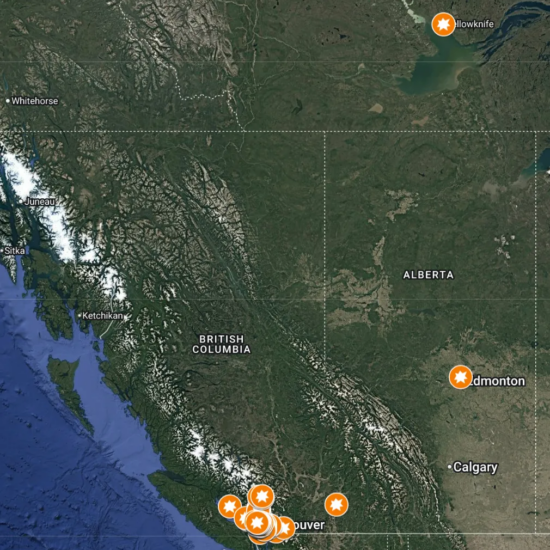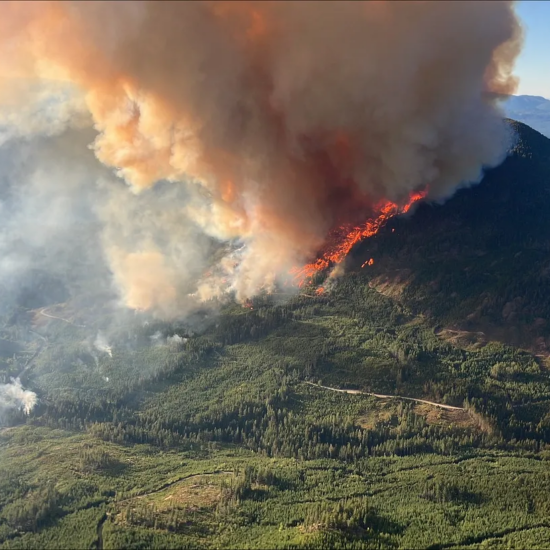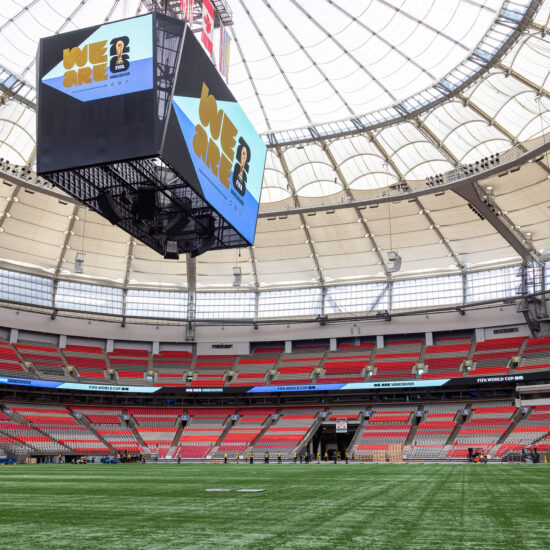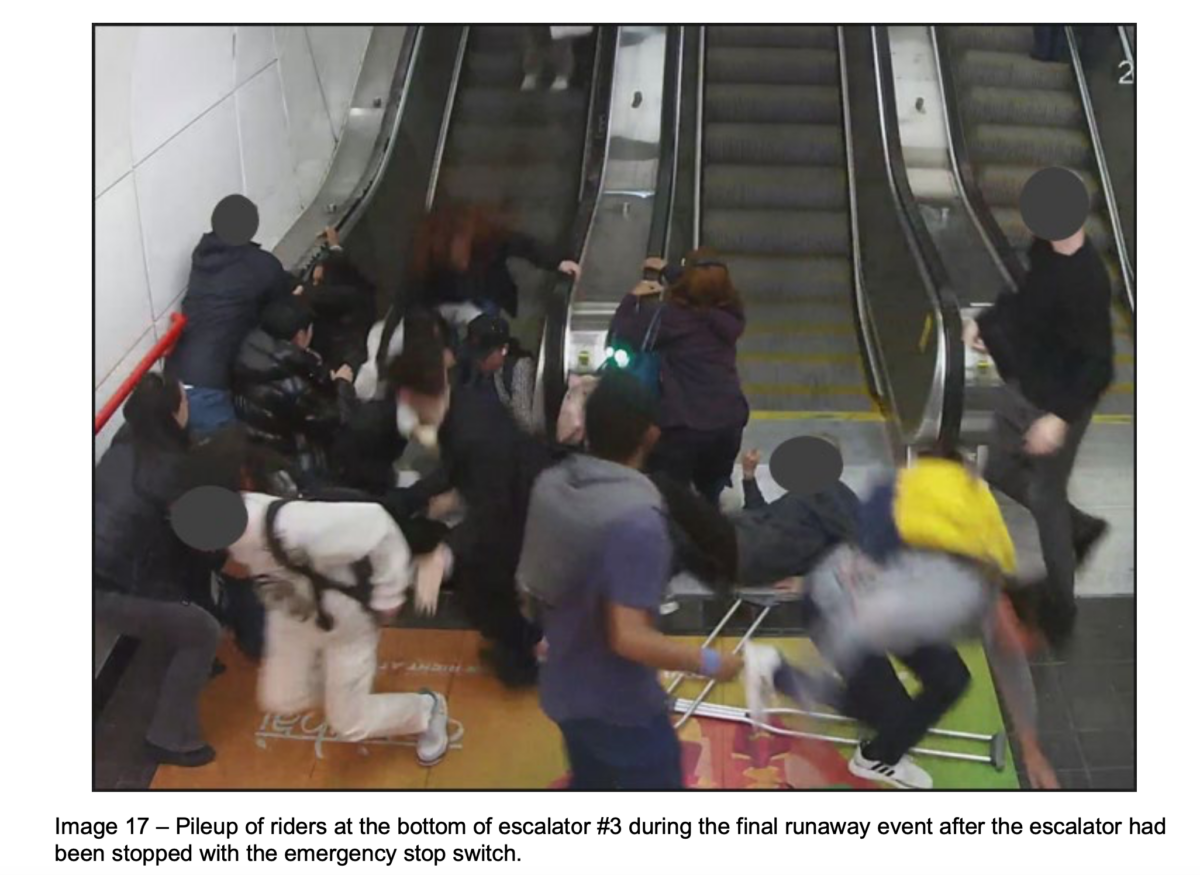
Bob Mackin
A misaligned gearbox led to malfunction of a Granville SkyTrain station escalator last fall, according to a Technical Safety BC report released Feb. 15
The safety braking system on escalator number 3 failed to hold the steps and protect riders during the uncontrolled descent — or runaway incident — on Sept. 29, 2023. Passengers piled up at the bottom and three were injured, including a 71-year-old woman taken by ambulance to hospital with head, shoulder and knee injuries.
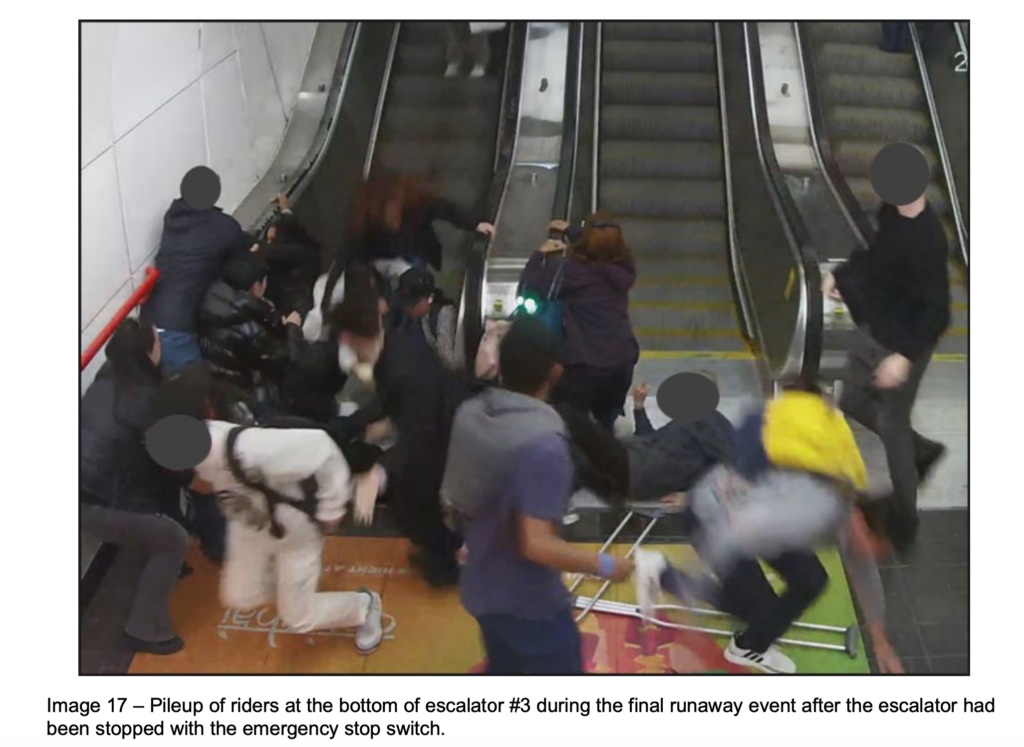
cutline: Pileup of riders at the bottom of escalator #3 on Sept. 29, 2023 at Granville Stadion, during the final runaway event after the escalator had been stopped with the emergency stop switch (Technical Safety BC/TransLink).
The investigation by the province’s technology regulator found that an alignment flange on the three-year-old escalator pushed out and the gearbox shifted approximately one centimetre. That was just enough to cause a rotating flange to contact the inside of a shaft cover, resulting in fine metal dust and shavings that plugged an oiling port.
“The lack of lubrication and misaligned contact of the step-drive main-shaft created wear to the point of failure and allowed the shaft to rotate independently of the drive motor and braking system when loaded [with passengers],” said the incident summary.
The report said that the 11 riders who boarded the down escalator at 2:57 p.m. were enough to “overcome the worn mechanical connection between the drive motor and the step-drive shaft.”
The steps sped up slightly, independent of the handrail, for 14 seconds.
Three minutes later, at 3 p.m., 14 people boarded, causing a 15-second runaway. Riders stumbled and one person fell. A bystander pressed the emergency stop button and pedestrians accumulated at the top of the escalator. No immediate warning was issued nor was a barricade erected.
At 3:02 p.m., riders began to walk down the steps, which began to move with 16 people aboard. The escalator accelerated for 18 seconds while the handrail remained stopped. Riders stumbled, fell and piled up at the bottom.
“Ten of them fell to the ground and two others jumped off the side, over the handrails,” the report said.
The report said the escalator code prohibits public use of a stopped escalator. Escalator steps do not comply with the building code, due to the risks of tripping and passenger load-related rollaway.
Under the freedom of information law, TransLink released a two-minute video shot by a surveillance camera at the top of the escalator that the shows the moving stairs in runaway condition.
But the Technical Safety BC report includes a dramatic still image from a surveillance camera at the bottom of the escalator, capturing people in various stages of collapse.
At 3:04 p.m., passengers placed a sandwich board at the top of the escalator to prevent others from loading. Four minutes later, a SkyTrain worker erected a “do not enter” barricade.
Technical Safety BC investigators found the escalator had undergone all regular scheduled maintenance by qualified technicians, but it had not reached the 25,000-hour threshold for an oil change.
“The equipment failure was due to the disengagement between the gearbox and the step-drive main-shaft as a result of misalignment and oil starvation,” the report said. “These were caused by the alignment plate movement on the step-drive main-shaft and debris from the wear of the step-drive main-shaft creating metal dust and shavings that plugged the oil passages to the shaft splines.”
TransLink said that repair costs were covered by manufacturer Kone. The escalator was out of service for almost a month, until Oct. 27. The agency did not immediately respond to questions about the report.
When originally installed in 1984, the escalators were Western Canada’s longest at 35 metres.
Under a $14.52 million replacement, Kone EcoMod Transit units were installed by July 2020. The Kone model uses a direct drive system connected to two electric motors through a series of gears without the use of a drive chain.
The report said the escalators carry an average 30,000 passengers on an average weekday and each escalator travels 12,744 kilometres annually, which is roughly the distance between Vancouver and Mumbai, India.
Support theBreaker.news for as low as $2 a month on Patreon. Find out how. Click here.






